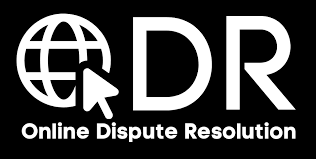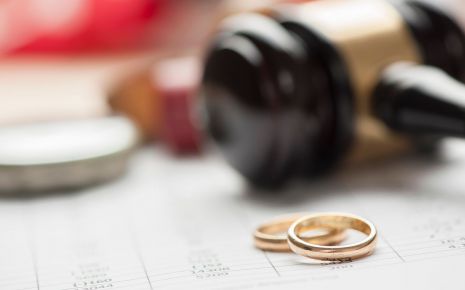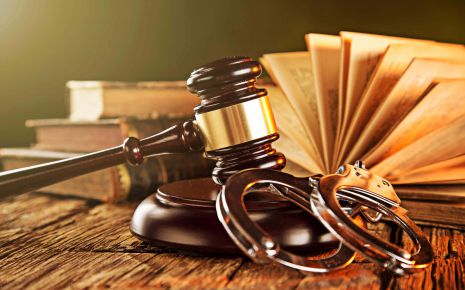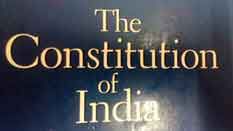Access To Justice For Marginalized People In India
It is unfortunate to be born marginalised, but worse to be marginalised,
vulnerable and unprotected in a developing country. The marginalised are most
affected even by the slightest temporary disruption. They are most vulnerable to
external shocks-economic, environmental or political, and have poor resilience
and limited capacity to overcome them.
The only thing worse than being blind is having sight and no vision
- Helen Keller
In this article, we shall talk about marginalization, its types, marginalization
in India and Indian Governmental approach to curb marginalization.
Marginalised people are the people who are treated as a group of unimportant,
insignificant people; considered as of lower status. They are also sometimes
referred as untouchables in some sections of the Indian sub-continent. The
reason marginalized people are treated this way with social exclusion is because
of various factors. The logic behind their social exclusion lies in their
incapacity to fulfil the needs of the society. The society treats their inputs
as insignificant because they are unable to give back valuable social,
economical, cultural and political inputs to the society; the way other sections
or communities of the society do. This process of pushing a community to the
edge is known as marginalization.
Merriam- Webster defines marginalization as:To assign to an unimportant or
powerless position within a society or group.
Oxford interprets marginalisation as: (of a person, group, or concept) treated
as insignificant or peripheral.
According to Cambridge dictionary, marginalisation means to treat someone or
something as if they are not important.
Marginalisation is characterised by the Business dictionary as:
The process
whereby something or someone is pushed to the edge of a group and accorded
lesser importance. This is predominantly a social phenomenon by which a minority
or sub-group is excluded, and their needs or desires ignored.
The Collins dictionary describes marginalisation as: To marginalize a group of
people means to make them feel isolated and unimportant.
The EFA Global Monitoring Report 2010 defines marginalization as “a form of
acute and persistent disadvantage rooted in underlying social inequalities”.
Thus, it can be said that marginalisation is a state where there is isolation
and a feeling of unwanted ness. Those who face marginalisation are called
marginalized people. Marginalized people are those people who face
discrimination on the basis of caste, colour, race, belief, language, religion
etc, on a regular basis.
The term marginalisation is of intricate value. The diagnosticalappliances used
to identify marginalisation involves areas of social, cultural, educational,
political and economical quality of life. The nature of setting of
marginalisation may vary from one place to another. For example, the quality of
life of a marginalised person in USA would be different from the quality of life
of an Indian marginalised person.
Marginalisation in India:
As the largest democracy in the world, Indian polity weaves immense diversity
into the fabric of a civilizational ethos of tolerance, respect and mutual
understanding. India is home to 1.2 billion people. India has a very large
population of Hindus (80% of the population), Muslims (13.4% i.e 138 million),
and a great many followers of other faiths, including Christians (2.3% i.e. 24
million), Sikhs, Jains, Parsis and others. India has 22 scheduled languages, but
more than 1,650 dialects are spoken across the country.
With a population of 1.2 billion people, India is a multi-cultural,
multi-linguistic, multi- religious and multi-ethnic secular country. India is
also the most representative democracy which elects approximately 3 million
people in the local self-government bodies - more than 1/3 of them being women.
During last two decades, India has made steady progress on economic front and
has achieved sustained growth of 8.2 percent for last 5 years but poverty has
declined only by 0.8 percent. India ranks 134 out of 187 countries on the UN
Human Development Index.[1]
Indian Constitution recognizes socially marginalized communities based on the
Caste they belong to. On the basis of caste, Scheduled Castes (SC), Scheduled
Tribes (ST), Other Backward Classes (OBC) and the religious minorities, and also
women are marginalized in the field of education.[2]
Marginalisation is of many kinds:
- Sex
- Age
- Disability
- Ethnicity
- Religion
- Caste
- Occupation
- Migrants
- Refugees, etc
But, sex, disability, ethnicity, religion, and caste are the main types of
marginalisation.
Marginalisation on the basis of sex:
Discrimination between man and woman is of historical value, observed all over
the world; mostly in developing countries. It is a phenomenon probably as old as
the human race.
Women have, on the whole, tended to have survival dis- advantages compared to
men in India (as in many other countries in Asia and North Africa, such as
China, Pakistan, Iran or Egypt). The mortality rates have typically been, until
very recently, higher for women of all age groups (after a short neo-natal
period of some months) up to the ages of thirty-five to forty years, contrary to
what one would expect biologically, given the medical evidence for lower
age-specific mortality rates for women than for men, when they receive symmetric
care.[3]
Mahatma Gandhi on marginalisation of woman:
“To call woman the weaker sex is a
libel; it is man's injustice to woman. If by strength is meant brute strength,
then, indeed, is woman less brute than man. If by strength is meant moral power,
then woman is immeasurably man's superior. Has she not greater intuition, is she
not more self-sacrificing, has she not greater powers of endurance, has she not
greater courage? Without her, man could not be. If nonviolence is the law of our
being, the future is with woman. Who can make a more effective appeal to the
heart than woman?[4]
Marginalisation on the basis of disability:
According to World Health Organization, people with disabilities are among the
most marginalized groups in the world. People with disabilities have poorer
health outcomes, lower education achievements, less economic participation and
higher rates of poverty than people without disabilities.
Marginalisation on the basis of religion:
On April 11 Pew Research Centre analysis of 198 countries ranked India as fourth
worst in the world for religious intolerance. In the country of 1.3 billion, the
incidence of hostility related to religion trailed only Syria, Nigeria and Iraq,
all places where sectarian violence is widespread. India is not alone in seeing
more religious unrest. Globally, Pew says, government restrictions on religion
and social hostilities involving religion increased in 2015 for the first time
in three years.
Pew analysed cases that involved hate crimes, mob violence, communal violence,
religion-related terror, the use of force to prevent religious practice, the
harassment of women for not conforming to religious dress codes, and violence
over conversion or proselytizing.[5]
Marginalisation on the basis of caste:
Dr. Manmohan Singh, in a conference in New Delhi In 2006:
Even after 60 years of constitutional and legal protection and support, there
is still social discrimination against Dalits in many parts of our country, Mr
Singh said.
Dalits have faced a unique discrimination in our society that is fundamentally
different from the problems of minority groups in general. The only parallel to
the practice of untouchability was apartheid.[6]
Access to Justice:
WE, THE PEOPLE OF INDIA, having solemnly resolved to constitute India into a
1[SOVEREIGN SOCIALIST SECULAR DEMOCRATIC REPUBLIC] and to secure to all its
citizens:
JUSTICE, social, economic and political;
LIBERTY of thought, expression, belief, faith and worship; EQUALITY of status
and of opportunity;
and to promote among them all
FRATERNITY assuring the dignity of the individual and the 2[unity and integrity
of the Nation];
The above mentioned is an abstract from the Constitution of India adopted on 26
November 1949.
The preamble of the Constitution of India is known as the soul of the
constitution. It is known as the document on which the entire constitution is
based upon. The preamble talks about certain terms, namely:
- Sovereignty;
- Socialism;
- Secularism;
- Democracy;
- Republic;
- Justice;
- Liberty and;
- Fraternity
The constitution of India believes in Equality for all, Justice to all and
freedom with all.
The statement can be supported by a trail of articles adopted in Part III of the
Constitution of India under the heading of Fundamental Rights ranging from
Article 14- Article 32.
Right to equality(Article14-18):
- Equality before law and equal protection of laws. (Article14)
- Prohibition of discrimination on grounds of religion, race, caste, sex or place of birth.(Article15)
- Equality of opportunity in matters of public employment. (Article16)
- Abolition of untouchability and prohibition of its practice. ( Article17)
- Abolition of titles except military and academic. (Artilce18)
Right to freedom (Article 19-22)
- Protection of six rights regarding freedom of:
(i) speech and expression,
(ii) assembly,
(iii) association,
(iv) movement,
(v) residence,
(vi) profession (Article 19). - Protection in respect of conviction for offences. (Article 20).
- Protection of life and personal liberty. ( Article 21)
- Right of elementary education. (Article21A)
- Protection against arrest and detention in certain cases. (Article22)
Right against exploitation (Article 23-24)
- Prohibition of traffic in human beings and forced labour. (Article 23).
- Prohibition of employment of children I factories, etc.(Article 24)
Right of freedom of religion (Article 25-28)
- Freedom of conscience and free profession, practice and propagation of religion. (Article 25)
- Freedom to manage religious affairs. ( article 27)
- Freedom from payment of taxes for promotion of any religion. (Article 27)
- Freedom from attending religious instruction or worship in certain educational institutions. (Article 28)
Cultural and educational rights (Article 29-30)
- Protection of language, script and culture if minorities. (Article 29)
- Right of minorities to establish and administer educational institutional. (Article 30).
Right to constitutional remedies (Article 32)
Right to move the Supreme court for the enforcement of fundamental rights including the writs of:
- habeas corpus,
- mandamus,
- prohibition,
- certiorari and
- quo warrento. (Article32)
Not just the Constitution of India, but the Government of India has also
introduced measures to improve justice delivery and to provide access to justice
to the 133.92 crore (as of 2017) Indians like setting up e-Courts under a
Mission Mode Project for computerization of courts and delivery of e-services to
stakeholders (Rs 935 crore), funding of infrastructure in subordinate courts
under the State Governments and funding of Family Courts (approx. Rs 4870 crore).
To reduce pendency and accelerate the disposal of cases, Department of Justice
has asked High Courts to undertake a drive for this purpose.
Justice Innovation Fund:
This was one of the important components of the Project, created for
implementing innovative activities on legal empowerment of marginalized people
and for developing capacities of intermediaries who assist them. Under this, 15
projects in the 7 Project States reached out to approximately 20 lakh people.
Over 7000 paralegals and 300 lawyers were trained and sensitized through series
of capacity development events. Quality knowledge products on legal empowerment
were created; innovative Information Education and Communication (IEC) materials
and community radio spots were developed and disseminated to raise legal
awareness among marginalized communities.
Young Lawyers for Justice Fellowship Programme:
A programme for training and sensitisation of young lawyers was launched in 3
States - Chhattisgarh, Jharkhand and Odisha with a view to encourage them to
assist marginalized people in accessing justice. 60 young lawyers were selected,
20 each in Chhattisgarh, Jharkhand and Odisha through a competitive selection
process. Series of training programmes were successfully conducted by 3 partner
organisations (CLAP, ELDF and Manthan).
Fellow lawyers were trained and sensitised on rights and laws related to marginalised sections, they were also
provided inputs on developing their professional skills such as drafting, legal
counselling, mediation and conciliation. The programme received active support
from Legal Services Authorities, and with the help of mentors, young lawyers
were supported in taking up community level activities such as conducting legal
awareness camps, providing legal advice, counselling and conducting action
research on specific topics etc.
Legal Literacy Training of Sabla Girls:
A need for providing legal literacy to Sabla (adolescent girls covered under the
Sabla scheme of WCD) came up as a result of convergence between the two central
ministries - Ministry of Law and Justice, and Ministry of Women and Child
Development. It was decided to train Sabla girls of Madhya Pradesh and
Rajasthan. A Rajasthan based organisation CECOEDECON was selected and they
successfully conducted 4 trainings in 2 States - Madhya Pradesh and Rajasthan,
where 200 Sabla girls were provided legal literacy trainings and exposure of
justice sector institutions.
Creation of Legal Literacy Materials for Sakshar Bharat Scheme:
IEC materials (12 booklets, 10 motivational songs, 1 short film on legal aid and
facilitators guide) on rights and entitlements of the marginalised people were
prepared as part of the convergence with MoHRD's Sakshar Bharat programme. Adult
legal literacy will now become a part of the continued adult literacy programme.
A handbook comprising the 12 booklets was jointly released by the former Hon'ble
Minister for Law and Justice and the Hon'ble Minister for HRD on 18th November
2011 at New Delhi.
Judges Training Module on Anti-Human Trafficking:
With the active support of the Maharashtra State Judicial Academy (MJA), the
Project developed a module for training of judges on anti-human trafficking.
Former Chief Justice of India, Hon'ble Shri. Justice Altamas Kabir, released the
training module during the valedictory session of the International Conference
on Equitable Access to Justice: Legal Aid and Legal Empowerment in November,
2012 Delhi. This module was circulated to Judicial Academies across the country.
Education is the great engine of personal development. It is through education
that the daughter of a peasant can become a doctor...that a child of farm workers
can become the president of a great nation. It is what we make out of what we
have, not what we are given, that separates one person from another.[7]
Long Walk to Freedom: The Autobiography of Nelson Mandela (1994, p. 144)
Awareness and education also play a key role in development of every country.
Awareness of citizens towards the laws made, awareness of the citizens towards
the working of the legislations etc. play a key role in the development of any
country.
Importance of education to address the needs of marginalized people:
To empower the marginalized in education is a societal resource and a means to
achieve egalitarianism.-
- Given equal opportunity for general, vocational, technical and professional education most citizens have equal status in the society. Education is often considered as an equalizer.
- Education brings about awareness of legal provisions that the marginalized can resort to in case of infringement of their rights.
- To create awareness about various schemes that help to combat stratification.
- To sensitize society towards the impact of stratification.
- To create egalitarian minds by instilling human values.
- Education nurtures critical thinking, decision making and such vital life skills that will help to fight the ill effects of stratification.
- Education seeks to integrate the marginalized into the mainstream through common education system, compensatory education, Laws such as Right to Education Act.
- Role of non-formal education in providing equalization of educational opportunities.[8]
Constitutional provisions to promote equity through Education:
The Fundamental Rights of the Indian Constitution has adopted the fourfold ideal
of Justice, Liberty, Equality and Fraternity. Our Indian Constitution has laid
down that in the eyes of law, everyone should have an equal status, justice not
is denied to anyone and everyone should have liberty of thought to expression.
The following articles make provision to protect the rights of the vulnerable and
assure that they are provided with education and protected by the law.
Article 45:
Right for Early Childhood Care and Education (ECCE) to all children
until they complete the age of six years. This article is considered as a
directive principle of state policy.
It states:
The State shall endeavour to provide, within a period of ten years from the
commencement of this Constitution, for free and compulsory education for all
children until they complete the age of fourteen years.
The Government of India has included ECCE as a constitutional provision through
the amended Article 45(as per the 86th Amendment of December, 2002 and passed by
Parliament in July 2009) which directs that the State shall endeavour to
provide Early Childhood Care and Education for all children until they complete
the age of six years.
Article 21A:
The Right of Children to Free and Compulsory Education Act (RTE,
Right to Education):
The Right of Children to Free and Compulsory EducationAct'
or 'Right to Education Act also known as RTE', is an Act of the Parliament of
India enacted on 4th August 2009, which describes the modalities of the importance
of free and compulsory education for
children between 6 and 14 in India under Article 21A. India became one of 135
countries to make education a fundamental right of every child when the act came
into force on 1 April 2010.
The State shall provide free and compulsory
education to all children of the age of six to fourteen years in such manner as
the State may, by law, determine.
Article 46:
Promotion of the economic and educational interests of the Scheduled
Castes, Scheduled Tribes and other weaker sections:
The State shall promote with
special care the educational and economic interests of the weaker sections of the
people, and, in particular, of the Scheduled Castes and the Scheduled Tribes,
and shall protect them from social injustice and all forms of exploitation.
It is
laid down in Article 46 as a directive principle of State policy that the State
should promote with special care the educational and economic interests of the
weaker sections of the people and protect them from social injustice.
Any special
provision that the State may make for the educational, economic or social
advancement of any backward class of citizens may not be challenged on the ground
of being discriminatory. Special efforts are being made for education
of the backward classes. Scholarships, hostel facilities, ashram residential
schools, relaxed norms for admission, reservation of seats.
Article 46:
Promotion of the economic and educational interests of the Scheduled
Castes, Scheduled Tribes and other weaker sections: The State shall promote with
special care the educational and economic interests of the weaker sections of the
people, and, in particular, of the Scheduled Castes and the Scheduled Tribes,
and shall protect them from social injustice and all forms of exploitation. It is
laid down in Article 46 as a directive principle of State policy that the State
should promote with special care the educational andeconomic interests of the
weaker sections of the people and protect them from social injustice.
Any special
provision that the State may make for the educational, economic or social
advancement of any backward class of citizens may not be challenged on the
ground ofbeing discriminatory. Special efforts are being made for education of
the backward classes. Scholarships, hostel facilities, ashram, residential
schools, relaxed norms for admission, reservation of seats are efforts to
achieve universal education in case of backward classes.
It is the responsibility of the state to make its citizens aware and help them
in uplifting them. A lot of awareness and educative programmes have been adopted
by the Government of India to uplift the poor state of the marginalised sections
of the country.
Elementary Education:
With the formulation of National Policy on Education, India initiated a wide range of programmes for achieving the goal of UEE through several schematic and programme interventions, such as:
- Sarva Shiksha Abhiyan
- Mid-day Meal Scheme
- Mahila Samakya
- Operation Blackboard
- District Primary Education Programme:
Secondary Education:
Secondary Education is the most significant stage in the educational hierarchy as it prepares the students for higher education and the world of work. The policy at present is to make secondary education of good quality available, accessible and affordable to all young persons in the age group of 14-18. At present, the following schemes targeted at secondary stage (i.e. class IX to XII) are being implemented in the form of Centrally Sponsored Schemes:
- Rashtriya Madhyamik Shiksha Abhiyan (RMSA)
- Girls Hostel Scheme.
- National Scheme of Incentives to Girls for Secondary Education.
- Scheme of Vocational Education.
- National Merit-cum-Means Scholarship Scheme.
- Scheme for construction and running of Girls' Hostel for students of secondary and higher secondary schools.
- Scholarship schemes for Minority students.
- National Scholarships.
Higher Education:
Higher Education is the shared responsibility of both the Centre and the States.
The coordination and determination of standards in institutions is the
constitutional obligation of the Central Government. The Central Government
provides grants to UGC and establishes Central Universities in the country.
Meritorious students, from families with or without necessary means, need an
incentive or encouragement to keep on working hard in their studies and go to
the next level of education in their academic career. This is where
the scholarships and education loans play a crucial role.
Following are some significant fellowship schemes/scholarships awarded by the various institutions:
- Scheme of Apprenticeship Training
- National Scholarships.
- Post-Doctoral Research Fellow (Scheme).
- Junior Research Fellowships for biomedical sciences.
- All India Council for Technical Education Scholarships.
- Department of Science and Technology grants and fellowships.
- DST's Scholarship Scheme for Women Scientists and Technologists.
- Biotechnology fellowships for doctoral andpostdoctoral studies by DBT.
- Sports Authority of India promotional schemes.
- Scholarship Schemes for ST Students by Ministry of Tribal Affairs.
- Post-metric Scholarships for SC /ST students.
- Scholarships for Minority Students.
Propelled by freedom of faith, gender equality and economic justice for all,
India will become a modern nation. Minor blemishes cannot cloak the fact that
India is becoming such a modern nation; no faith is in danger in our country,
and the continuing commitment to gender equality is one of the greatest
narratives of our time.- Pranab Mukherjee
In the end, we must remember that no amount of rules or their enforcement will
defeat those who struggle with justice on their side.- Nelson Mandela
End-Notes:
- https://doj.gov.in/sites/default/files/Increasing-A2J_0.pdf
- Ministry of Minority Affairs, Report on National Commission for Religious and Linguistic Minorities, http://www.minorityaffairs.gov.in/sites/default/files/volume-1.pdf
- Amartya Sen, The Idea of Justice (2009 pg 166 para 1)
- (May 8, 2017, 07:41 AM), https://www.goodreads.com/quotes/204536-to-call-woman-the-weaker-sex-is-a-libel-it
- https://qz.com/india/959802/india-is-the-fourth-worst-country-in-the-world-for-religious-violence/
- https://archivepmo.nic.in/drmanmohansingh/speech-details.php?nodeid=433
- https://www.researchgate.net/publication/327237865_Constitutional_Rights_and_Marginalization_in_Education_in_India
Written By- Reeya Khanna
Law Article in India
Legal Question & Answers
Lawyers in India - Search By City
LawArticles
How To File For Mutual Divorce In Delhi

How To File For Mutual Divorce In Delhi Mutual Consent Divorce is the Simplest Way to Obtain a D...
Increased Age For Girls Marriage

It is hoped that the Prohibition of Child Marriage (Amendment) Bill, 2021, which intends to inc...
Facade of Social Media

One may very easily get absorbed in the lives of others as one scrolls through a Facebook news ...
Section 482 CrPc - Quashing Of FIR: Guid...

The Inherent power under Section 482 in The Code Of Criminal Procedure, 1973 (37th Chapter of t...
The Uniform Civil Code (UCC) in India: A...

The Uniform Civil Code (UCC) is a concept that proposes the unification of personal laws across...
Role Of Artificial Intelligence In Legal...

Artificial intelligence (AI) is revolutionizing various sectors of the economy, and the legal i...








Please Drop Your Comments